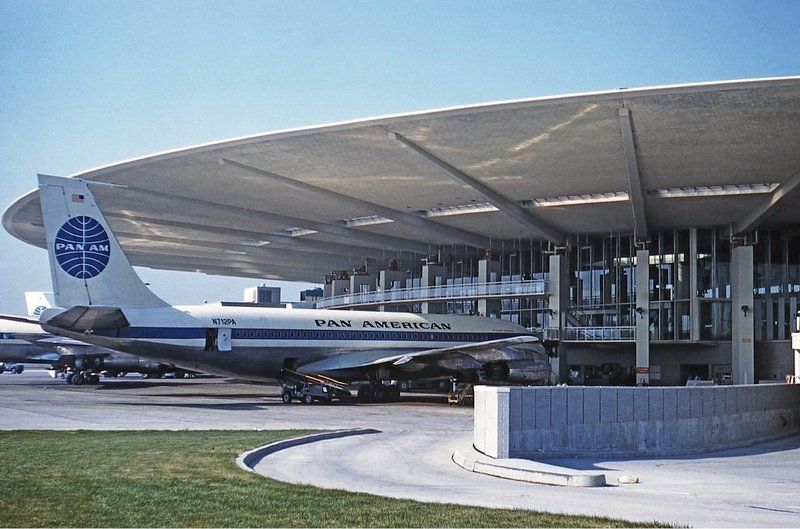How to See the Liberty Bell...in Queens
A copy of the famous American bell can be found inside a bank, which itself is modeled after Independence Hall!


Photo by Jon Proctor via Wikimedia Commons
Our piece on the preservation of the Worldport Pan-Am Terminal at JFK Airport elicited a lot of strong reactions on both sides. Our piece was intended to highlight the unlikelihood this terminal would be saved based on criteria for listing on the National Register of Historical Places. At the same time, we acknowledged that there was a strong emotional connection these buildings, and other Jet Age terminals like the TWA Flight Center and the (now demolished) I.M. Pei terminal have.
One reader concurred:
As much as one would like to save these grand structures, airport buildings are in a tough position. More so now than ever, where the efficiency of airport operations is so finely tuned and demanded of. Airport real estate is scrutinized to the square foot. And as wonderful as they look in photographs, these buildings take a beating, get tired and worn down. We can all wax nostalgic.
In our original article, we cited the alterations to the structure as one of the reasons why landmarking of Worldport has lacked institutional support. Lisa Wojcik of Save the Worldport, whose father worked was the principal architect of Worldport Terminal wrote us:
We at Save the Worldport, do not believe that the alterations done to the original structure should be a reason to invalidate our applications for historical preservation. Those interior alterations are such that can be easily removed, and should be. We are proposing that the entire addition added in the 1970s to accommodate 747s be demolished and that Worldport can be fully restored to its original open, sleek, and beautiful design.
Insofar as the architects not having as much cache as Eero Saarinen, maybe that’s true to a point, but that is not in itself a reason to deny historical reservation either. Not that much is publicly known about my father, Emanuel Turano, FAIA. I have attempted to get that information to the public.
My father was part of the mainstream of mid-century modern architecture. He was mentored at Harvard Graduate School of Design by Walter Gropius (Bauhaus and International Movements). He was association in various ways Mies van der Rohe, Le Corbusier, Phillp Johnson, and Saarinen. Dad was on the design team at Skidmore, Owings, & Merrill of Lever House.
And yet another reader wrote in with an emotional rally on why to save the Worldport:
Why, because of it’s unique style of modernism. Because of it’s futuristic design of architecture, that was to pave the way for the first commercial Boeing 707 to depart from her gate. Why, because of her one of a kind, cantilevered umbrella roof, that her jets were enabled to pull right up to the terminal safeguarding her passengers and employees from the outside elements. Why, because Worldport symbolizes the beginning of the JET AGE and what was to come for all airlines. The beautifully sculpted bronze figurines representing the signs of the zodiac were removed as all the flags of the free world along it’s upper and lower decks. Such a wonderful sight as you approached Worldport, with her shiny glass and metal portals, reaching out like an oversized saucer from a foreign land. Somehow all that magic left, as the bronze sculptures, the flags and the world’s premier carrier, the one and only Pan American World Airways. What remains is an empty shell of its former self. The right thing to do of course, is to save, restore, refit, and preserve her for generations to come.
Thank you for all the comments on this piece, we continue to enjoy hearing from our well-informed readers. Read more about the landmarked TWA Flight Center at JFK Airport and learn about the campaign at Save the Worldport.
Subscribe to our newsletter